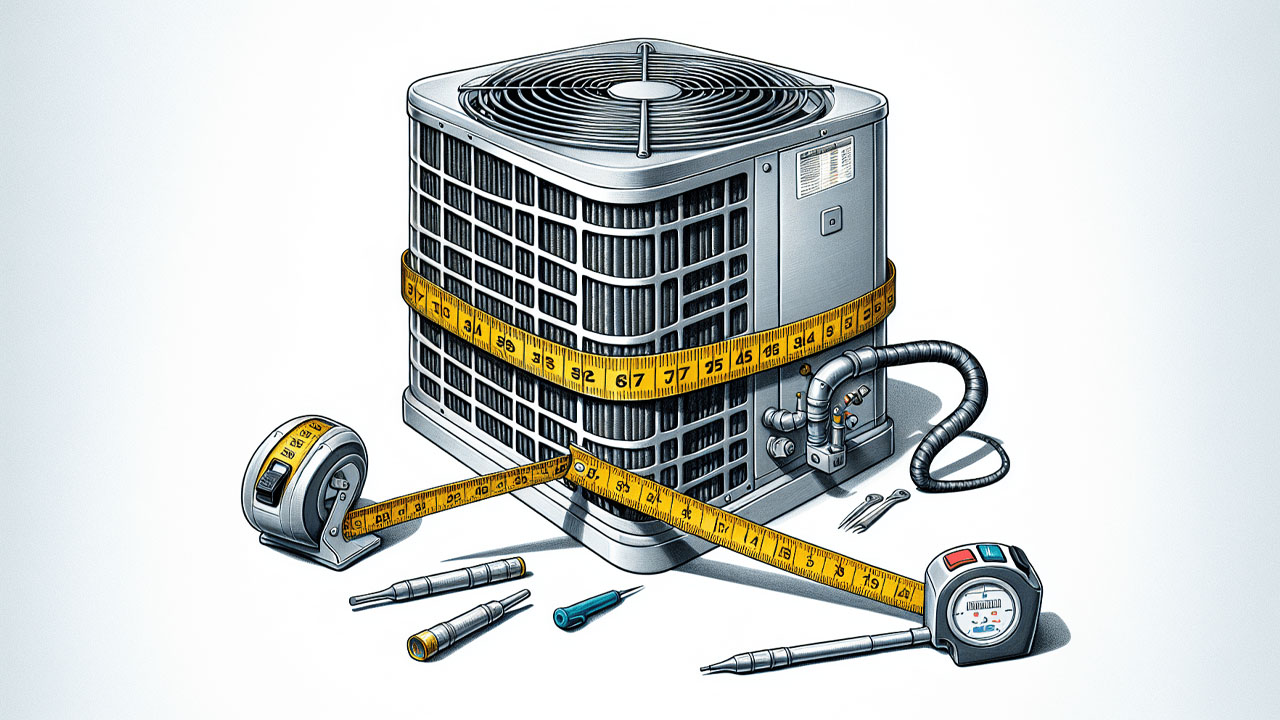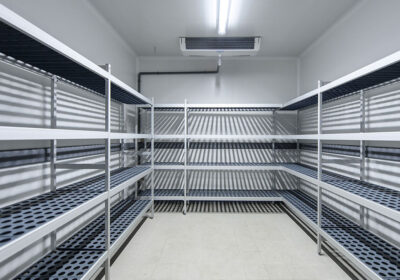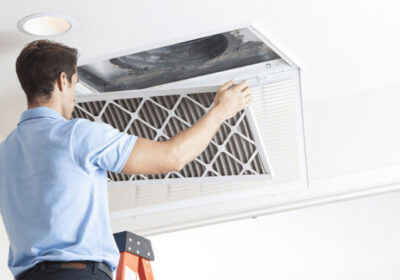AC Unit Sizing Guide: Why Bigger Isn’t Always Better

et’s be honest, when it comes to air conditioning, most of us assume something kind of logical, bigger must mean better. After all, a more powerful unit should cool your space faster and keep it more comfortable, right? Well, not quite. In the world of HVAC systems, bigger isn’t always better. In fact, too large an AC unit can cause more problems than it solves, from skyrocketing energy bills to uneven cooling, humidity issues, and even shortened equipment life.
In this complete AC unit sizing guide, we’re going to dive deep into why getting the right-sized air conditioner is key to saving money, staying cool, and keeping your system running for years. Whether you’re in Edgeware or East Finchley, understanding your needs is the first step to year-round comfort.
Let’s unpack why size does matter, but not in the way you think.
Understanding AC Unit Sizing
When we talk about the “size” of an air conditioner, we’re not talking about its physical dimensions, we’re talking about power and capacity. AC units are measured in BTUs (British Thermal Units) or tons. One ton equals 12,000 BTUs per hour, and the right number of BTUs depends on your space, climate, insulation, and more.
Think of BTUs as the unit’s muscles. Too little muscle, and it can’t keep up with the heat. Too much muscle, and it flexes too hard, too fast, and then shuts down, before it gets the job done properly.
The Problems with Oversized Air Conditioning Units
So, what exactly happens when you install an AC system with too much power?
First, it kicks in, cools the room rapidly, then shuts off. On the surface, that might sound efficient, but hang on, this is called short cycling, and it creates multiple issues:
- Energy Waste: Your unit uses the most electricity when it starts up. Constantly kicking on and off burns through more energy.
- Hot and Cold Spots: Because it shuts off quickly, the entire space doesn’t get evenly cooled.
- Higher Bills: All that starting and stopping? It’s driving your energy costs up.
- More Frequent Repairs: That stop-start pattern adds wear to components, reducing lifespan.
- Humidity Problems: Here’s a biggie, because it doesn’t run long enough, it doesn’t properly dehumidify your space. Hello, clammy discomfort!
It’s like hiring a bulldozer to plant flowers, overkill doesn’t improve results, it just causes mess and damage.
The Downsides of Undersized AC Units
On the flip side, going too small to save a few pounds can backfire too.
Undersized systems have to run practically non-stop to keep up with demand. This leads to:
- Overworked Units: Just like running a car engine at top speed all day, your AC gets strained and overheats.
- Sky-High Electricity Use: Constant operation = higher usage = bloated bills.
- Low Comfort on Hot Days: You may never reach the desired temperature during extreme heat.
Think of it as trying to push a boulder uphill with a teaspoon, you’ll get there eventually, maybe… but at what cost?
Why Proper Sizing is Key to Efficiency and Comfort
The sweet spot in AC sizing lies in matching the system’s power to your home’s exact needs. A right-sized unit:
- Runs at optimal intervals, avoiding short cycling
- Maintains steady temperatures throughout the space
- Controls humidity effectively
- Uses power efficiently and lowers energy bills
- Lasts longer with fewer repairs
It’s all about the balance, not too big, not too small, just right. Goldilocks would approve!
Key Factors That Determine AC Unit Size
So how do we figure out what “just right” means? Here are the main elements that factor into AC sizing:
- Square Footage: The primary driver. A small home can use much smaller capacity than a large commercial building.
- Ceiling Height: Taller ceilings mean more air to cool.
- Insulation Quality: Poor insulation increases demand.
- Window Quantity and Direction: South-facing glass can add major heat.
- Sunlight: The more sunlight entering, the more BTUs are needed.
- Occupants and Appliances: More bodies and machines add to the heat load.
Each building is unique. That’s why a one-size-fits-all approach doesn’t cut it.
How HVAC Professionals Size Your AC System Accurately
If you’re wondering how professionals get this sizing stuff right, here’s the secret sauce: Manual J Load Calculations.
This method takes into account every major factor, from local climate (yes, including London’s unpredictable weather) to room layout, insulation levels, and sun exposure. It’s a scientific, math-based approach, not a guessing game or online calculator.
At D&A Repair, we don’t believe in shortcuts. DIY sizing guides often ignore key variables, leading to costly errors. We carry out full assessments before we recommend or install any unit. It’s our way of making sure you feel confident that your investment will pay off from day one.
HVAC Sizing Myths Debunked
Let’s clear the air on some common myths:
- “Bigger cools faster”: It does. But it stops too fast, so your room stays humid and uneven.
- “Buy the most powerful you can afford”: Not true. Power doesn’t translate to performance if your space doesn’t need it.
- “Large units add resale value”: Nope. A well-sized, efficient system adds real value, not overkill units.
Don’t let these myths drain your wallet and zap your comfort.
Summary: AC Size and Your Bottom Line
Choosing the right AC size affects so much more than just temperature.
- Your monthly bills depend on it
- Your daily comfort relies on it
- Even your health and indoor air quality are impacted
- Not to mention your system’s lifespan and cost of maintenance
An oversize or undersized unit is like wearing the wrong shoe size. Sure, you could make it work, but it’s uncomfortable and potentially damaging over the long term.
D&A Repair: Your Local Experts in AC Sizing and Installations
At D&A Repair, we’ve helped homeowners and small businesses all across London and its neighborhoods, from Finchley, Muswell Hill, and Hackney, to Tottenham, Barnet, and Colindale, solve their cooling dilemmas with right-sized, energy-efficient HVAC systems.
Our team doesn’t just install units, we build relationships based on trust, transparency, and professional quality. From Potters Bar to Cheshunt, from Edgware to Brent Cross, we’re your go-to local experts for refrigeration and AC repair.
Need a consultation? We work fast, around your schedule, and our pricing is always competitive and upfront. No surprises. Call us today!




In the world of air conditioning, it turns out size absolutely does matter, but bigger isn’t always better. The right-sized unit is the gold standard for comfort, efficiency, and cost-effectiveness. Instead of guessing or going “extra just in case”, why not lean on professionals like D&A Repair to get it exactly right?
Comfort shouldn’t be complicated, with the right help, it won’t be.
FAQs
1. What happens if my AC unit is too big for my house?
It will cool your space too quickly, cycle on and off frequently, and leave excess humidity behind, which can lead to mold and inefficiency.
2. How do I know what size AC unit I need?
A professional HVAC technician can perform a proper load calculation based on your home’s size, insulation, location, and more.
3. Can a smaller AC unit save me money in the long run?
Only if it’s adequately sized. Too small, and it overworks itself, increasing both energy costs and wear. It’s all about balance.
4. What’s the danger of high humidity from oversized units?
High humidity can cause discomfort, condensation, mold growth, and poor indoor air quality.




Leave a Reply